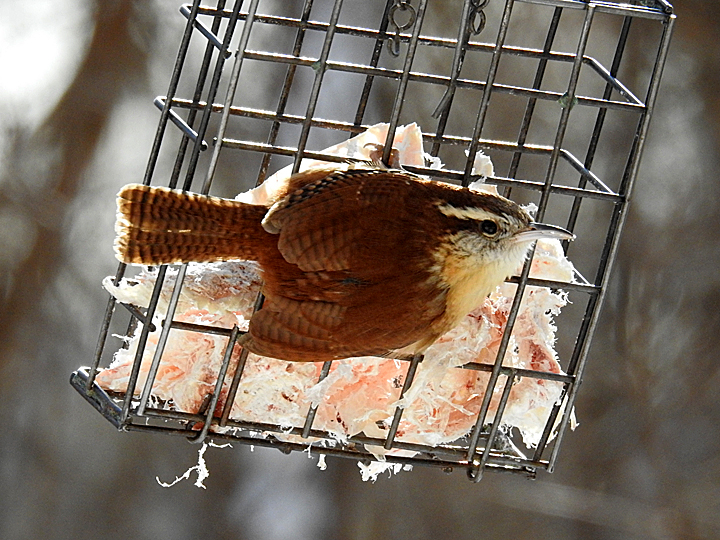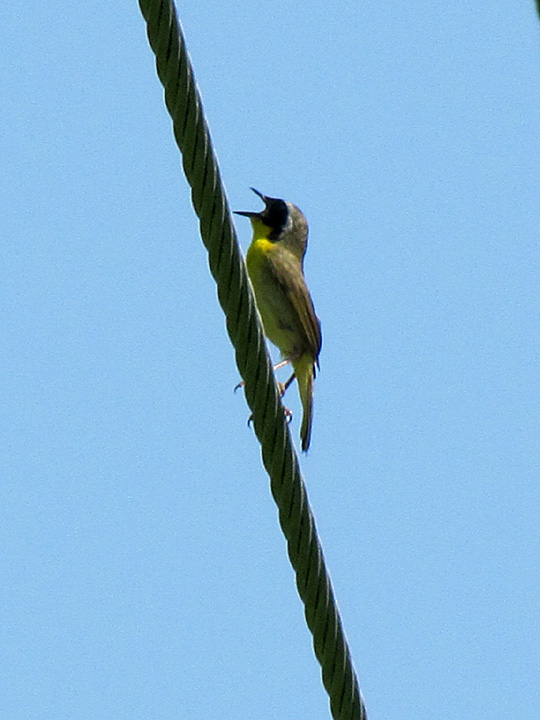Mariton: Learning Bird Songs, Part II
by Tim Burris, Preserve Manager. Photos by Carole Mebus.
Learning bird songs may seem overwhelming. To be honest it is learning a new language and can be quite formidable at first. I always recommend that folks try to learn four or five bird songs each year. Next spring, you will have to refresh your memory, and if those five come back quickly, than you can add five more. The following spring (after you dust away the cobwebs) you will have 10 birdsongs and you can add five more. Committing five songs is different than learning and hearing a dozen other songs during the spring. You may hear the song of an Indigo Bunting throughout the summer. You may learn to recognize it on any one day. You might not commit it to memory, but when you hear it later in the summer you hopefully recognize a song that you have heard before. Using binoculars and thinking about some of the species that might exist in that particular habitat might help you come up with Indigo Bunting from the song. Or it might not, but you can now distinguish that song from other songs that you are hearing. And that is how you learn different bird songs. In future years, it will become one of your five new birds to learn.

Carolina Wrens say “Tea Kettle! Tea Kettle! Tea Kettle!”
In Part I, I talked about my own difficulties using the mnemonics for the Carolina Wren and the Common Yellowthroat. Besides coming up with a different mnemonic, I learned to hear the difference between their voices, or tones. For some people this is relatively easy, for others it soooo difficult.
To try to explain it, how many times have you been in a crowded room and suddenly recognized a friend’s voice from across the room? Many times you had no idea that person was even at the party, and you might not be able to actually hear what they are saying, but you instantly recognized their voice and were able to tease it out from all of the other distractions (music, glasses clinking, other people talking). That person’s voice was different and unique to you.

Common Yellowthroats sing “Witchity! Witchity! Witchity!”
In a similar way different bird species have different voices. Hearing the difference between the voices of the Carolina Wren and the Common Yellowthroat has helped me where the mnemonic couldn’t. The difference between a bassoon and bass clarinet? Same register but different voices. The difference between a tenor saxophone and an alto saxophone playing the same notes again has subtle differences that some people hear very clearly. It is funny that I can differentiate those examples, but I can’t tell Billie Holiday apart from Madeleine Peyroux, however the sound of their musicians is very different to me and makes it a no-brainer. (I’ll talk about how we use this difference in another installment.)
So, as you learn a bird’s song try to hear beyond the mnemonic. Hear that species’ voice or tone. Is it a clear whistle or a throaty slur? Is it a buzzy kazoo voice? Sometimes it will be the voice that helps you distinguish one bird species from another. Again, just as with mnemonics, it helps to go out with someone else who can point out the differences in songs.
